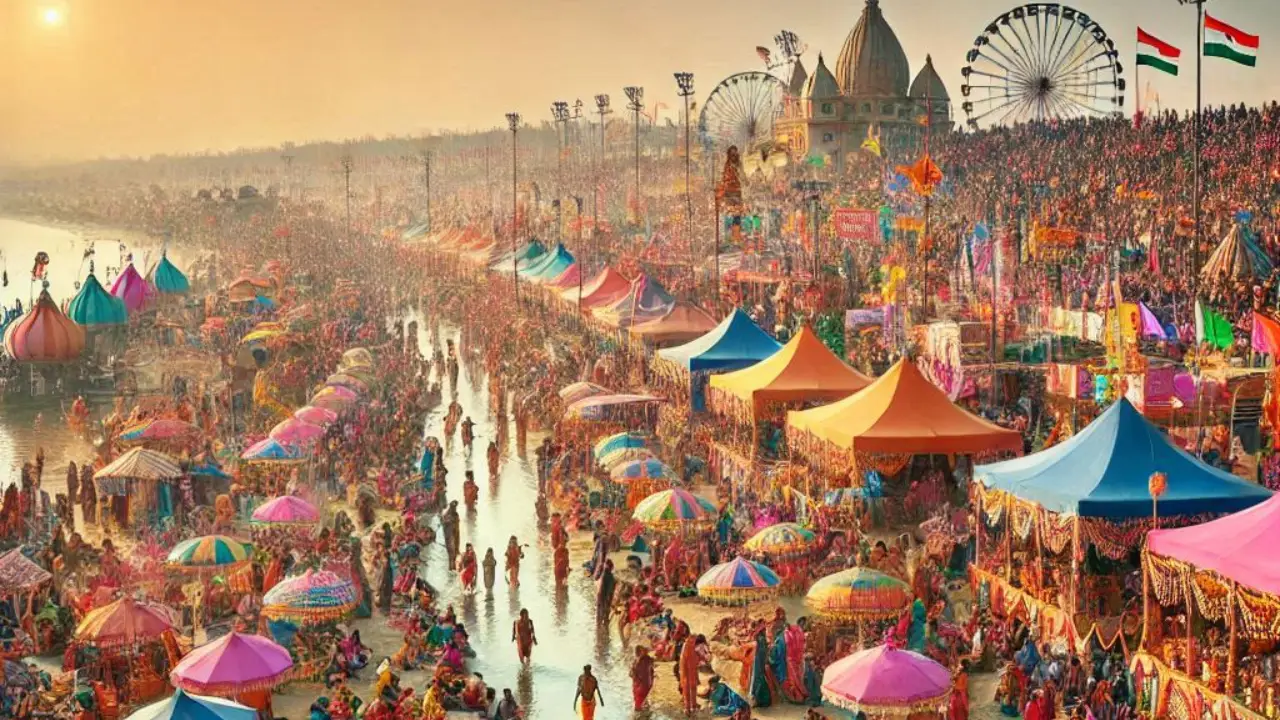The Kumbh Mela stands as a profound symbol of spiritual devotion and unity. Drawing millions from across the globe, it’s a testament to the enduring power of faith and tradition. This sacred Hindu gathering has become a source of inspiration for pilgrims and spectators alike, blending ancient rituals with timeless lessons of spirituality.
A Historical Perspective on Kumbh Mela
Kumbh Mela’s origins date back thousands of years, rooted in ancient Indian mythology. The event celebrates the celestial battle between gods and demons for the nectar of immortality, or amrita. Legend says drops of this nectar fell at four locations—Prayagraj, Haridwar, Ujjain, and Nashik—making these cities the venues for the Kumbh Mela. Each site hosts the event in rotation, with gatherings occurring every 12 years at each location.
Historical texts, including the Puranas, mention this gathering as an occasion for spiritual growth. From ancient kings to modern devotees, the Kumbh Mela has captivated generations, offering solace and divine blessings.
The Spiritual Essence of Kumbh Mela
At its heart, Kumbh Mela is about purification and renewal. Pilgrims believe bathing in the sacred rivers during the event washes away sins, paving the way for liberation or moksha. The rivers—Ganga, Yamuna, and the mythical Saraswati—serve as conduits of divine energy, attracting millions seeking spiritual fulfillment.
Take, for instance, the story of a humble farmer named Ramesh from a small village in Uttar Pradesh. He saved money for years to attend the Kumbh Mela in Prayagraj. Upon his return, Ramesh described the experience as life-changing, emphasizing how the collective devotion of millions strengthened his own faith.
A Gathering of Unparalleled Magnitude
The sheer scale of Kumbh Mela is awe-inspiring. Recognized by UNESCO as an intangible cultural heritage, the gathering sees millions of attendees over its duration. The logistics alone are staggering, with temporary cities springing up to accommodate pilgrims. From sanitation to security, the event showcases the collective effort of government bodies, volunteers, and religious organizations.
Visitors often recount their amazement at the seamless coordination. Arjun, a first-time attendee from Mumbai, marveled at how the temporary tents felt like home. Despite the crowds, he found the atmosphere serene, filled with chants, music, and the scent of incense.
Rituals That Define the Kumbh Mela
Several rituals make Kumbh Mela unique, each holding deep spiritual significance.
Shahi Snan (Royal Bath): This ceremonial dip by saints and ascetics marks the beginning of the Mela. The sight of these holy figures, adorned in saffron robes, inspires reverence among attendees.
Pravachan (Discourses): Eminent saints and spiritual leaders deliver lectures on Hindu philosophy, guiding listeners toward a path of righteousness.
Akharas (Monastic Orders): The Akharas are a vital part of the Mela. These groups of ascetics showcase their devotion through rituals, debates, and processions.
Annadanam (Food Offering): Many pilgrims engage in the act of giving, distributing food to others as a form of service or seva.
Each of these rituals emphasizes selflessness, community, and spiritual growth, values that resonate far beyond the Kumbh Mela.
Cultural and Global Impact
Kumbh Mela’s influence extends beyond spiritual circles. It serves as a melting pot of culture, attracting scholars, photographers, and travelers eager to witness this extraordinary event. Documentaries and research papers often highlight the Mela’s ability to preserve ancient traditions in a modern world.
For individuals like Priya, a yoga teacher from California, attending the Kumbh Mela was an opportunity to connect with her Indian roots. She shared how the experience enriched her understanding of Hinduism and inspired her teachings back home.
Lessons from Kumbh Mela for Everyday Life
Kumbh Mela offers profound lessons that can guide anyone, regardless of their background or beliefs.
The Power of Faith: The unwavering devotion of millions reminds us of the strength faith can bring to our lives.
Unity in Diversity: People from all walks of life come together, showcasing the beauty of harmony and mutual respect.
Mindful Living: The simplicity of life at the Mela encourages attendees to reflect on their priorities and embrace gratitude.
Service to Others: Whether through charity or acts of kindness, the Mela highlights the importance of helping others.
Consider incorporating these values into your daily routine. Small acts, like practicing gratitude or helping a neighbor, can lead to meaningful personal growth.
Planning Your Visit to Kumbh Mela
If you’re inspired to experience the Kumbh Mela firsthand, preparation is key. Start by selecting the location and dates that suit you best. Ensure you book accommodations early, as spaces fill quickly. Be respectful of the customs and rituals, and immerse yourself in the vibrant atmosphere.
Take cues from seasoned travelers who recommend packing essentials like comfortable clothing, reusable water bottles, and a guidebook to navigate the event.
Why the Kumbh Mela Matters
Beyond its spiritual and cultural significance, it symbolizes the enduring spirit of humanity. It’s a reminder of our shared values, aspirations, and the timeless quest for meaning. Whether you attend for faith, culture, or curiosity, the Kumbh Mela offers a transformative experience unlike any other.
Have you ever attended the Kumbh Mela, or do you dream of experiencing it someday? Share your thoughts, questions, or stories in the comments below. Your insights could inspire others to explore this extraordinary gathering of faith and culture.

